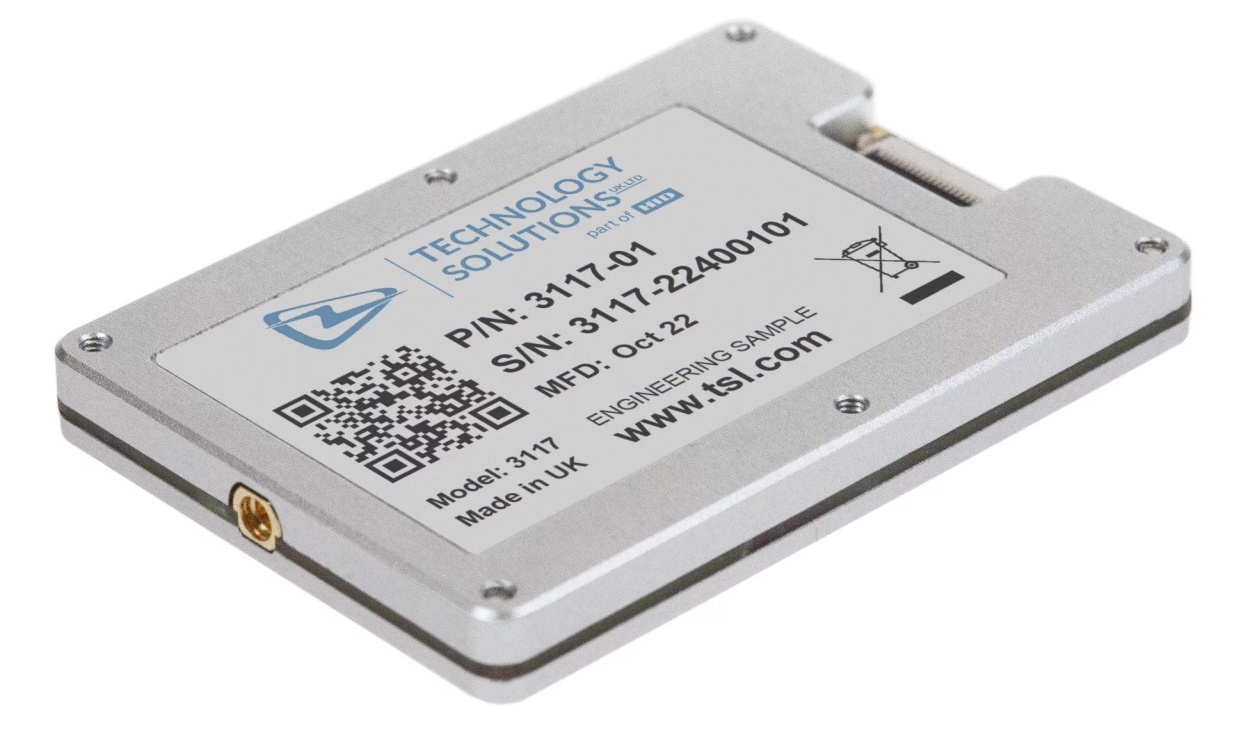Technology Solutions TSL3117 and TSL3417 & TSL3419 RAIN RFID Reader Module Developer Kit aids developers in exploring and testing the capabilities of the TSL3117 and TSL3417 & TSL3419 RAIN RFID Modules.TSL3117 and TSL3417 & TSL3419 RAIN RFID Reader Module Developer Kit - TSL have drawn upon years of industry leading mobile RFID experience to design and manufacture a family of high performance, energy efficient UHF RFID modules that can be easily
Technology Solutions TSL3117 and TSL3417 & TSL3419 RAIN RFID Reader Module Developer Kit aids developers in exploring and testing the capabilities of the TSL3117 and TSL3417 & TSL3419 RAIN RFID Modules.
TSL3117 and TSL3417 & TSL3419 RAIN RFID Reader Module Developer Kit - TSL have drawn upon years of industry leading mobile RFID experience to design and manufacture a family of high performance, energy efficient UHF RFID modules that can be easily integrated into handheld/mobile/battery powered devices or small, fixed reader applications.
These highly configurable and flexible modules come with a range of RF modes to ensure optimal performance in even the most challenging environments.
The compact and slim form factor of these modules provide flexible mounting options, supported by industry standard USB and serial UART port interfaces combined with four configurable 3.3V I/O lines.
The 50 Ω MMCX Antenna Port(s) provide the freedom to specify an antenna perfectly tuned to your unique application. The class-leading 3117 and 3417/3419 RAIN RFID modules support multiple RF modes including High Speed Tag Acquisition Mode, High Sensitivity Mode and Dense Reader Mode (DRM). Software programmable output power allows the conducted output to be configured in 0.1 dBm steps from 1 – 32 dBm (1 mW – 1.58 W).
The next generation Impinj E710 chip in the 3117 and 3417 sports cutting-edge hardware and the latest anti-collision recognition algorithms, enabling read rates of ≥ 1300 tags/s. The 3419 RAIN RFID Reader Module is our ultra high-sensitivity, flagship model, sporting a top-end Impinj E910 reader chip.
TSL’s STORM RFID protocol (a sophisticated, parameterised set of commands that carry out multiple actions locally within the RFID module) makes embedded integration a breeze, reducing time-to market and development costs. Multiple complex tag commands can be stored across 10 memory banks and then executed by simple calls to each bank. This approach enables complex tag operations to be executed using simple pre-configured commands.
TSL provides the free, comprehensive STORM Protocol SDK, allowing development in C, C# and Java languages on platforms including .NET, Android, Windows and Linux.
Features & Benefits:
• High Performance UHF RFID
• RAIN RFID (EPC Class 1 Gen 2, ISO18000-63) compliant
• Single SKU for global use
• All worldwide regions supported
• Fast Read Rate ( ≥ 1200 tags/s )
• Applicable for both mobile and fixed reader installations
• Lightweight and compact form factor
• Low Power Consumption
• MMCX 50 Ω Mono-Static Ports
• Up to 32 dBm (1.58 W) output power
• USB and Serial UART Port interfaces
• Support for the entire 860 – 960 MHz UHF RFID carrier frequency range to accommodate global regulations
Applications:
• Mobile Handhelds/Handheld Accessories
• Kiosks / Point of Sale
• Compact Fixed Readers
• Industrial Automation
• Long Range Readers
Provides connectors for Power, USB, High-Speed Serial and GPIO pins
Push buttons to start/stop commands stored in the memory banks
The Developer Kit can be set up in minutes.
The Developer Kit can be powered by DC (recommended) or USB (provided the USB-C data connection is capable of supplying up to 2A)
The only additional equipment required is a Windows 10 PC and some UHF RFID tags.
Dedicated supporting software & documentation:
Developer Kit User Guide
STORM Protocol Explorer app
STORM Protocol User Guide
STORM command bank examples
Power Supply: 5 – 15 VDC, 2.0A
Compatible with: TSL 3117, 3417 or 3419 RAIN RFID Modules
Data Connections: USB-C
High Speed Serial (UART)
SPECIFICATIONS:
Physical and Environmental Characteristics
Dimensions:
3117: 42 (W) x 60 (L) x 6.7 (H) mm
3417/3419: 42 (W) x 68 (L) x 6.7 (H) mm
Weight:
3117: 30 g (1.06 oz)
3417/3419: 34 g (TBC)
Power Supply: 5 – 15V DC
Power Consumption: 1.2A (operating @ 30dBm, 5.0V DC)
Enclosure materials: Aluminium
Mounting:
3117: 3x M2 pre-threaded holes
3417/3419: 4x M2 pre-threaded holes
Performance Characteristics
RFID Core:
3117/3417: Impinj E710
3419: Impinj E910
Co-Processor: ARM Cortex-M4 running TSL STORM Firmware
Communication protocols:
TSL® STORM Protocol
TSL® STORM Protocol SDK:
Language Platform
Java Android, Windows, Linux
C# .NET 5+ for Windows 10
.NET 4.6 for Windows
Linux e.g. Ubuntu, Raspbian
C Embedded systems
supporting ANSI C
RFID Performance
Standards supported: EPC Class 1 Gen 2
Frequency Range(s):
865 – 868 MHz (ETSI)
915 – 921 MHz (ETSI Upper Band)
902 – 928 MHz (FCC)
RF Power:
1 – 32 dBm (1mW – 1.58W) Conducted Output
Configurable in 0.1 dBm steps
Receive Sensitivity:
3117/3417: Up to -88 dBm
3419: Up to -92 dBm
Environmental
Operating Temp.: -20°C to 60°C (-4°F to 140°F)
Connectivity Options
USB CDC Virtual COM Port
UART – Serial Port - 9600 to 921600 bps (921600 bps default)
8-N-1, Flow Control: None
3.3V TTL Logic Levels (5.0V Tolerant)
I2C Master for optional accessories
Uses I/O 1 & 2
Requires external pull-ups to 3.3V
I/O
4 x GPIO lines
Regulatory
Supported Regions
Pre-configured for the following regions:
US, Canada and other regions following US FCC 47 CFR Ch. 1 Part 15
Europe and other regions following ETSI EN 302 208-1 (V 2.1.1)
Australia, Brazil, China, Hong Kong, India, Indonesia, Japan, Korea, Malaysia, New Zealand, Peru, Philippines, Singapore, South Africa, Taiwan, Thailand, Uruguay and Vietnam
For other regions please Contact TSL


